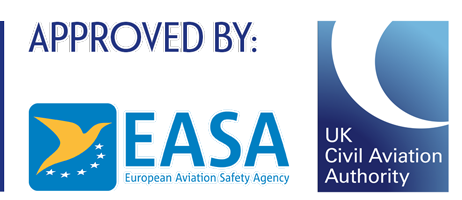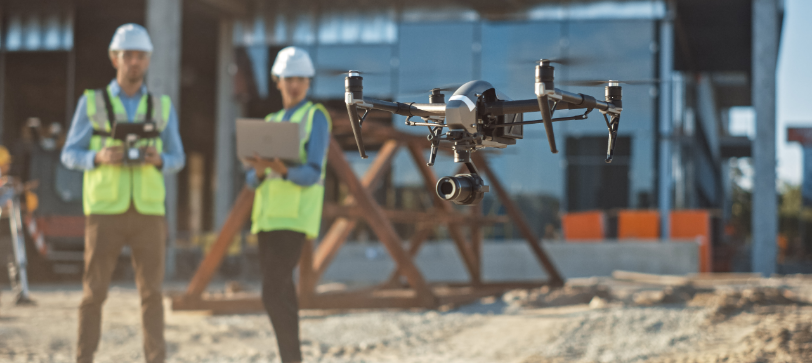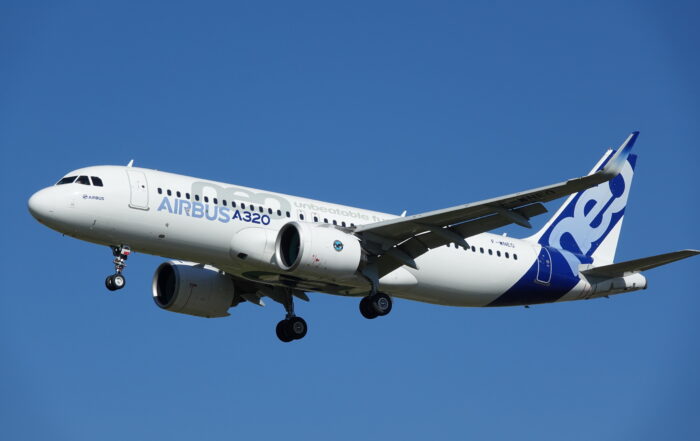Drones Have Taken Off: The Importance Of Drone Technology And Why You Should Take A GVC Course
It’s hard to believe that a little flying robot can monitor large crowds, carry medicine, deliver mail, provide data to create 3D images, transmit live images to television, offer filmmakers another dimension in incredible clarity, cause havoc at events or airfields, and be able to intercept public life by either speeding it up or bringing it to a standstill. Whether you regard drones to be futile gadgets or powerful innovations, they deserve our attention. Drones have truly transformed the way that humans operate and view the world around them.
According to research published in Business Insider, the drone services market is expected to grow to $63.6 billion dollars by 2025.
This appears entirely plausible when taking into consideration the fact that sales of consumer drones in the United States exceeded $1.25 billion in 2020 due to more affordable drones becoming increasingly popular for recreational use. For instance, competitors to drone giants like DJI are producing similar models for a fraction of the cost, consequently encouraging hesitant consumers to purchase their drones.
The drone services industry has been steadily growing since 2014 when the US military began spending an extra $5 billion annually on drone technology, thus signifying the pending impact and importance of drones.
In November 2020, MIT revealed that at least 80 nations can now deploy remote-controlled drones. Overall, drones have had an undeniable impact on the way that human society functions.
Drones have become a principal component of daily operations in industries such as; journalism, insurance, law enforcement, construction, media production, agriculture, mining, arms, and of course aerospace and aviation.
WHAT EXACTLY ARE DRONES AND HOW DO THEY WORK?
An unmanned aerial device, vehicle, system, or machine is colloquially referred to as a ‘drone’.
A drone is an aircraft without a human pilot onboard, yet drone flights are controlled by remote human operators. Drones function through an accumulation of technologies including; computer vision, sensors, and object avoidance technology.
A BRIEF HISTORY OF DRONES
It can be asserted that the earliest drone-esque device was the 19th-century invention of a balloon carrier. Much like the drones of today, balloon carriers functioned as vehicles that allowed humans to observe or to deliver ammunition.
In 1917 Britain tested the Aerial Target, which was a small radio-controlled aircraft. The following year, America first flew an aerial torpedo. Neither device was used operationally during the period of wartime in which they flew, but they represent further advances in the drones’ journey from the 19th-century to the present day.
Historians such as Spencer C. Tucker and Priscilla Mary Roberts regard the Israeli Tadiran Mastiff to be the first modern surveillance drone; due to its ability to feed live video footage of its targeted area to its operators.
CONTEMPORARY USES OF DRONES
At present, the term drone has been injected into common parlance, and drones themselves serve multiple purposes within society. They are predominately used for streaming optical images, collecting data, and accumulating information.
Consequently, in a world where we value the collection and dissemination of data, drones have taken centre stage. Functions including the collection of images and data can be applied to different operations. For instance, a drones’ thermographic imaging, not to mention its ability to collate data on location and altitude can shed light on newfound ways to observe animals, their habitats, and conservations.
On the other hand, military drones can be applied to law enforcement, and are often employed by defence organisations when policing large areas and surveilling borders. Furthermore, drones are now utilised in efforts to track diseases, and perhaps their best-known use is that of allowing the public to examine the enduring conflicts and war zones taking place on foreign soil. Technological advances have paved the way for the normalisation of fleets of drones being operated by a sole individual’s smartphone. Additionally, increasingly sophisticated designs have inhibited drones from blaring disrupting noises or slipping into malfunction.
The fact that industrial drones are used to inspect production sites, deliver the post, forecast extreme weather and examine the full extent of a storm or tsunami’s impact cements the fact that drones have become extremely helpful in assisting humans with problem-solving. For instance, unmanned aerial systems with fitted thermal imaging cameras have been able to support emergency response teams in finding and identifying victims. Similarly, police drones with outfitted lasers are able to assist in locating the bodies of murder victims.
Due to the 2014 emergence of Zipline – an American medical product delivery firm that specialises in manufacturing delivery drones – it can be assumed that in the near future drones will regularly be used to deliver medicines and first aid kits to the wounded in war zones, or perhaps drones equipped with high-quality cameras could allow doctors to remotely examine injured civilians.
On the other hand, remote war-fighting technologies could potentially prevent civilians from being injured, and lessen indiscriminate bombings, or de-escalate global tensions.
Taking this into consideration, we can predict that drones will be used as food delivery vehicles that intend to provide impoverished regions with fresh food and clean water. On a smaller scale, drones could be employed instead of courier vans to deliver online shopping orders to customers which would reduce road traffic and air pollution.
Overall, an intensified use of drones could change the world, support humanitarian initiatives, and save lives.
DRONES AND EVTOL
One of the most significant breakthroughs of modern times has been that of eVTOL, not because of its current disruption of how human society functions but due to its future possibilities.
eVTOL has been projected to become commercially viable in the coming decade, with concept aircrafts, futuristic air roads, battery innovations, and ‘flying cars’ all becoming hot topics of discussion within the tech and aviation industries.
In Britain, plans are underway for the world’s first airport for flying taxis to be constructed in Coventry and the project has received extensive government backing. With drones also being zero-emission electric vertical takeoff and landing aerial vehicles, they are often regarded as being in the same category as eVTOL aircraft.
With these once abstract concepts becoming increasingly tangible, drones are set to become even more useful and important in public life.
MORE HINDRANCE THAN HELP
Drones have transformed quite a few aspects of everyday life from television coverage to building surveys to construction site monitoring to weddings.
Much like any other powerful innovation; in the wrong hands, things could easily go array.
Misbehaving drones have the power to invade privacy, halt events, loiter around commercial airfields, and disrupt air travel and flight safety. In retaliation to numerous drone incidents at UK airports and unlicensed drones generally causing havoc in airspace, the British government declared it illegal to fly a drone within 5KM of an airport in March 2019. In an effort to minimize the impact that drones have on operating airports there are now Flight Restriction Zones in place specific to drones.
Overall, drone technology has become more reliable over the years and advanced enough to complete complicated tasks efficiently and without fault.
WHY YOU SHOULD TAKE A DRONE COURSE
Confused as to why anyone should bother with a drone course when drones can be purchased anywhere and tutorials exist online, I consulted the Head of UAS Training at BSA, John Moreland, for his input on BSA drone courses and general drone conduct.
John stated that an untrained drone operator could end up causing all sorts of havoc (as evidenced in the disruption of airports and football matches that frequently emerge in the news).
Drones can be operated for personal enjoyment if they are under 4 kilos.
John suggests that BSA drone courses are practically essential when utilising drones for business purposes. John continues that numerous large firms that use drone services require employees to complete a GVC course. On completion of an accredited GVC course, a person will get approval from the CAA and will make it onto their list of approved UAS operators.
Buying a drone is easy, but there must be a few pre-requisites and checks that need to be made before flights.
BSA offers a range of training courses that can guide a complete novice through to being a competent and responsible drone pilot, ensuring that the latest UAV rules and regulations are understood and that safety is paramount.
John continues that any training should be a mixture of theory and practicality. The Drone Introductory Course is a perfect example of this because its practical session includes hands-on experience under the watchful eye of the course instructor.
Secondly, John states that the CAA places an emphasis on the drone operator and the remote pilot to determine where, when, how, and what they do with the drone and whether they understand the environment they are flying in.
With any drone with a camera or over 250 grams, the pilot should consider one or both the next-level courses that BSA offers. These are the A2 Certificate of Competency (A2 CofC) or the General VLOS Certificate (GVC).
Both courses are brilliant for individuals who wish to operate in environments that are close to other people, like in construction or development zones. Throughout these courses, the focus is on the risk that the drone can present to third parties, particularly to people on the ground are referred to as “uninvolved persons”, and the more “uninvolved persons” likely to be in the same parameter as the drone, the more problems that are likely to occur whilst operating in that environment. Both of these courses place an emphasis on having the right CAA competency, oversight and authorisation.
The current regulations are not the easiest to understand and interpret but BSA’s course instructors are very experienced and lead the discussion on what is or isn’t considered acceptable under certain circumstances.
The emphasis is on complying with the rules on drone safety, to ensure that “uninvolved persons” are not accidentally injured by your drone.
Clients and sometimes landowners like the assurance that there is CAA oversight: the CAA has ‘authorised’ the operator to conduct drone operations under a set of pre-defined risk conditions. The GVC has a more professional standing than the A2 CofC, and the GVC course at BSA presents the opportunity to make the drone pilot more aware of potential hazards and how to mitigate some of the risks that might be present during a flight.
In the future BSA hopes to be able to conduct Remote Pilot Licence courses for certified operations.
Additionally, the GVC course teaches drone operators how to contact control towers, share their flight plans and gain permission to fly in certain restricted areas. The GVC certificate can allow for drone operations within an airport’s airspace.
John compares drone training to manned aviation pilot training by analogously stating that flying a drone recreationally is like holding a PPL, but to become a safer and more professionalised pilot you would need to sit a CPL or ATPL.
Overall, John argues that face-to-face drone courses should not be overlooked or brushed aside for a short YouTube tutorial. Having a sound practical understanding of the drone and the environment it’s being flown in is extremely important for safety reasons.
Book a BSA drone course here: https://britishschoolofaviation.com/product-category/drones/
_
Melissa Fleur Afshar
Content and Media Manager at British School of Aviation








